Sustainable Manufacturing: How Production Planners Can Drive Efficiency and Environmental Responsibility
Sustainability is no longer a buzzword; it's a business imperative. This shift is driven by increasing regulatory requirements, consumer demand for eco-friendly products, and the recognition that sustainable practices contribute to long-term operational resilience and profitability. As industrial manufacturing facilities strive to balance profitability with environmental stewardship, production planners stand at the crossroads of operational efficiency and sustainable practices.
The role of a production planner is evolving, with a growing emphasis on optimizing resources, reducing waste, and integrating advanced planning systems like PlanetTogether with enterprise resource planning (ERP) solutions such as SAP, Oracle, Microsoft, Kinaxis, and Aveva.
In this blog, we'll explore how production planners can champion sustainable manufacturing practices, the benefits of integrating advanced planning tools with ERPs, and actionable steps for embedding sustainability into everyday production planning.
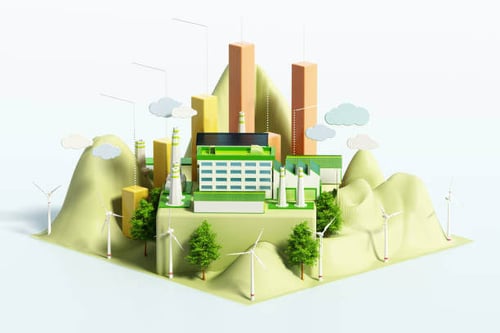
The Growing Importance of Sustainable Manufacturing
Global concerns over climate change, resource scarcity, and environmental degradation have propelled manufacturing facilities to rethink their production strategies. Regulations like the Paris Agreement and increased consumer demand for eco-friendly products add pressure to adopt sustainable practices.
For production planners, this shift requires:
Reducing Energy Consumption: Optimizing production schedules to minimize energy-intensive processes.
Minimizing Waste: Implementing lean manufacturing principles to reduce scrap and rework.
Optimizing Resource Utilization: Ensuring efficient use of raw materials, labor, and machinery.
Enhancing Supply Chain Transparency: Collaborating with suppliers and partners to track and reduce carbon footprints.
However, achieving these goals is challenging without the right tools. This is where integrating PlanetTogether with leading ERP platforms can make a significant difference.
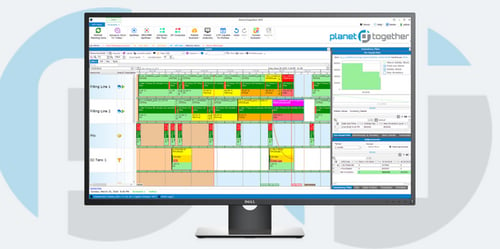
The Role of Advanced Planning and Scheduling (APS) in Sustainability
PlanetTogether's Advanced Planning and Scheduling (APS) software empowers production planners to make data-driven decisions that align with sustainability goals. Unlike traditional production planning tools, APS software provides dynamic, real-time insights and scenario modeling to optimize resources and minimize environmental impact. By integrating APS with ERP systems like SAP, Oracle, Microsoft, Kinaxis, or Aveva, planners can:
Optimize Production Schedules for Energy Efficiency
Energy consumption varies across different production activities. APS tools can analyze historical energy usage and recommend schedules that align with periods of lower energy rates or renewable energy availability. For instance, integrating PlanetTogether with SAP allows production planners to access real-time energy consumption data and adjust schedules accordingly.
Example: A manufacturing facility integrated PlanetTogether with SAP S/4HANA and discovered that running certain machines during off-peak hours reduced energy costs by 15% while lowering their carbon footprint.
Minimize Material Waste through Smart Scheduling
Excess material waste is both costly and environmentally damaging. APS systems analyze production patterns to identify opportunities for reducing scrap and rework. By connecting PlanetTogether with Oracle NetSuite, production planners can track material usage in real-time and implement just-in-time manufacturing techniques.
Example: A packaging manufacturer reduced material waste by 20% by using PlanetTogether and Oracle NetSuite to synchronize production schedules with supplier deliveries, ensuring materials were used before expiration.
Enhance Supply Chain Visibility and Collaboration
Sustainability doesn't stop at the factory floor. A product's carbon footprint is significantly influenced by its supply chain. Integrating PlanetTogether with Kinaxis or Aveva can provide end-to-end visibility into supplier practices, transportation emissions, and material sourcing.
Example: An industrial manufacturer used PlanetTogether and Kinaxis RapidResponse to track supplier emissions and prioritize partnerships with eco-friendly suppliers, reducing supply chain-related emissions by 10%.
Improve Resource Allocation and Utilization
Efficient resource utilization is critical for sustainability. APS software can model various production scenarios to determine the most resource-efficient approaches. Integrating PlanetTogether with Microsoft Dynamics 365, for instance, enables planners to predict equipment wear and tear, schedule preventive maintenance, and avoid unnecessary downtime.
Example: A machinery manufacturer reduced equipment-related energy consumption by 12% by using PlanetTogether with Microsoft Dynamics 365 to monitor and maintain machine performance.
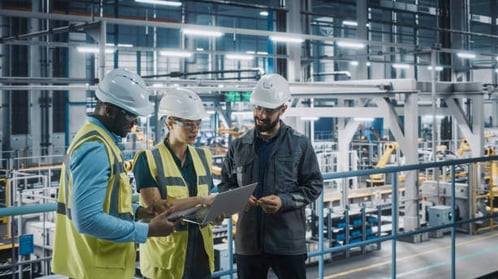
Steps for Production Planners to Drive Sustainable Manufacturing
1. Assess Current Operations
Begin by conducting a sustainability audit of current production processes. This includes evaluating energy consumption, material usage, waste generation, and process efficiency to identify areas for improvement. Identify areas of high energy consumption, material waste, and operational inefficiencies.
Key Questions to Ask:
Which processes are the most energy-intensive?
Where does material waste commonly occur?
Are there opportunities to use recycled or renewable materials?
2. Set Measurable Sustainability Goals
Define clear, quantifiable sustainability objectives. These goals could include reducing energy consumption by 10%, cutting material waste by 15%, or increasing the use of recycled materials by 20%.
SMART Goal Example: "Reduce production-related CO2 emissions by 15% within 18 months by optimizing production schedules with PlanetTogether and SAP."
3. Leverage APS and ERP Integration
Collaborate with IT teams to integrate PlanetTogether with your ERP system. Ensure data synchronization to access real-time insights into production schedules, energy usage, and resource allocation.
Integration Tips:
Work closely with ERP vendors like SAP, Oracle, Microsoft, Kinaxis, or Aveva to configure integrations.
Train production teams on using APS dashboards for sustainability-focused decision-making.
4. Optimize Production Schedules
Use APS capabilities to experiment with different production scenarios. For example, a facility might simulate scheduling adjustments to run energy-intensive equipment during off-peak hours, reducing both costs and environmental impact. Identify schedules that minimize energy use, reduce idle times, and maximize machine efficiency.
Practical Application: Schedule energy-intensive tasks during off-peak hours to leverage lower electricity rates and reduce strain on the power grid.
5. Monitor, Analyze, and Improve
Sustainability is an ongoing journey. Continuously track key performance indicators (KPIs) such as energy consumption, material waste, and carbon emissions.
Recommended KPIs:
Energy consumption per unit produced
Material yield rates
Carbon emissions per production batch
Use tools like PlanetTogether integrated with SAP Analytics Cloud to generate visual reports, identify trends, and make informed decisions.
Sustainable manufacturing is not just about regulatory compliance or corporate social responsibility; it's about securing long-term profitability and operational resilience. Production planners in industrial manufacturing facilities have a unique opportunity to lead this transformation.
By integrating PlanetTogether with ERP systems like SAP, Oracle, Microsoft, Kinaxis, and Aveva, planners can unlock new levels of efficiency, minimize environmental impact, and contribute to a more sustainable future.
The path to sustainability starts with a single, well-planned step. Embrace the power of advanced planning and scheduling, and make sustainability a cornerstone of your production strategy today.
Are you ready to take your manufacturing operations to the next level? Contact us today to learn more about how PlanetTogether can help you achieve your goals and drive success in your industry.
Topics: Industrial Manufacturing, Energy Efficiency, PlanetTogether Software, Integrating PlanetTogether, Optimize Production Schedules, Minimize Material Waste through Smart Scheduling, Enhance Supply Chain Visibility and Collaboration, Improve Resource Allocation and Utilization







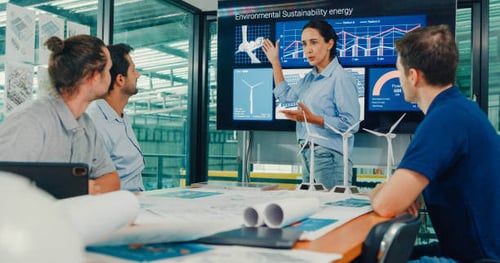
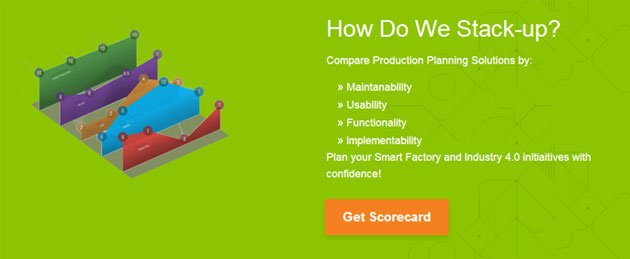
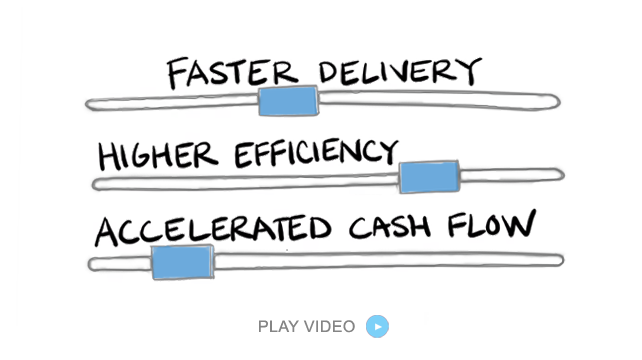











LEAVE A COMMENT